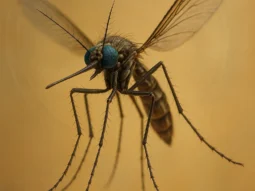
Pest Control Guide for Healthcare Facilities
Maintaining a pest-free environment in healthcare facilities isn't just about cleanliness; it's a critical component of patient safety and regulatory compliance. Pests like rodents, insects, and birds can pose serious health risks, carrying diseases that could compromise the well-being of patients and staff.
Your facility's reputation hinges on its ability to provide a safe, hygienic space for healing. That's why a detailed pest control checklist is indispensable. It ensures every corner of your facility, from the bustling lobby to the quietest storeroom, remains free from unwanted guests. With regular inspections and proactive maintenance, you'll keep your healthcare facility in top shape, safeguarding the health of everyone who walks through your doors.
Why Pest Control is Important for Healthcare Facilities
Maintaining a pest-free environment in healthcare settings isn't just about keeping up appearances. It's an essential practice to protect the well-being of patients and staff as well as to comply with stringent health regulations. In these environments where the risk of infection and disease transmission is already heightened, the importance of pest control cannot be overstated.
The Consequences of Pest Infestation
If you're managing a healthcare facility, it's vital to understand that pests pose several serious risks. Not only can they damage equipment and contaminate sterile areas, but they also have the potential to jeopardize your facility's operation altogether.
Here's what could happen in the event of an infestation:
- Spread of Diseases: Pests like rodents and insects are carriers of a myriad of diseases. Rodents alone are known to carry over 35 different diseases that can be directly transmitted to humans. In a place where patient health is your top priority, such risks are unacceptable.
- Structural Damage: Pests can gnaw through walls, wiring, and other critical components of your infrastructure, leading to costly repairs and potential hazards.
- Sanitation Issues: The presence of pests undermines the sanitation efforts of your staff, causing the potential for hospital-acquired infections to rise.
- Reputational Damage: Nothing can tarnish the reputation of a healthcare facility faster than news of a pest infestation, potentially resulting in a loss of trust from the community and a decrease in patient numbers.
- Legal and Financial Repercussions: Failing to control pests can lead to legal actions, fines, a drop in the food hygiene rating, and in extreme cases, closure of the facility.
The Importance of Preventing Pest Infestation
Preventative measures are the bedrock of effective pest control. Integrating pest management strategies into daily operations can help you avoid the myriad of problems that pests cause. Continuous monitoring, identifying potential entry points, and maintaining sanitary conditions are just a few ways to make sure your facility stays pest-free.
Implementing an Integrated Pest Management (IPM) approach allows for a proactive stance on pest control. With this strategy, professionals utilize technology such as IPM software to monitor pest activity continuously, ensuring interventions are timely and targeted. By striking preemptively, you're not just controlling pests, you're preventing the multitude of issues that accompany a full-blown infestation before they start.
Additionally, clear guidelines for setting tolerable thresholds ensure that action can be taken swiftly should pests be detected in the facility, helping maintain the health and safety of everyone involved and keeping the facility's reputation intact.
Being mindful of the various consequences and prioritizing prevention helps ensure your facility runs smoother and maintains the highest standards of patient care and safety. With the right pest control protocols in place, healthcare facilities can provide a safer environment for healing and recovery.
Creating a Pest Control Plan
Conducting a Facility Assessment
Your first step in creating an effective pest control plan is to conduct a comprehensive facility assessment. A skilled pest control provider will lead you through this audit, identifying vulnerabilities both inside and outside your healthcare facility. They will showcase signs of pest activity and may pinpoint specific pests that pose an immediate threat. During the assessment, it’s essential to examine all potential entry points and harborage areas, from cracks in the foundation to poorly sealed windows, to ensure these susceptibilities are addressed promptly and effectively.
Identifying Common Healthcare Facility Pests
Recognizing the types of pests that frequently infiltrate healthcare facilities is crucial. Cockroaches, for example, are notorious for both their resilience and their role as carriers of bacteria, which could spread throughout your facility. Additionally, you'll need to keep an eye out for other common offenders like rodents and birds, which can compromise sanitation and pose significant health risks. Understanding these threats will guide you in customizing your pest control strategies to target the specific challenges your facility may face.
Setting Up Monitoring Systems
After identifying potential pests, it's vital to set up monitoring systems around your facility to detect early signs of infestation. This proactive measure allows your staff to swiftly address any issues before they become large-scale problems. Monitoring should include regular checks of hot spots throughout the facility, especially in areas where pests are likely to seek food, water, or shelter. By staying vigilant and using these monitoring tools, you can keep your facility one step ahead of pest infestations.
Developing Integrated Pest Management (IPM) Strategies
An Integrated Pest Management (IPM) strategy is the cornerstone of a modern pest control plan. IPM focuses on preventing pest intrusions while minimizing the reliance on chemical pesticides. To develop effective IPM strategies, consider the following measures:
- Sealing gaps and cracks to prevent entry
- Eliminating food and water sources that attract pests
- Using non-chemical methods such as traps and exclusion techniques
- Applying chemical controls only as a last resort
IPM strategies are tailored to your facility's specific needs, incorporating ongoing staff training to ensure your team becomes effective facility scouts. Regular service schedules and continuous evaluations of IPM methods play a crucial role in maintaining a pest-free healthcare environment.
Implementing Pest Control Measures
Implementing pest control measures in a healthcare facility is an ongoing process that requires diligence and consistent attention to detail. You need to focus on several crucial practices to maintain a pest-free environment.
Exclusion and Sanitation Practices
Exclusion is your first line of defense against pests. By cutting off their access to your facility, you'll significantly reduce the likelihood of infestation. Inspect the exterior of your building regularly and seal any gaps, cracks, or holes. Doors and windows should also have intact weather stripping and proper sweeps to prevent pest entry.
Sanitation is equally vital in deterring pests. Promptly wipe down equipment and clean spills to prevent attracting pests with moisture and food debris. Ensure that drains are inspected for buildups and that products and supplies are stored properly – off the ground and on open shelving.
Regular Inspections and Maintenance
Scheduling regular pest control inspections is crucial. A thorough inspection allows you to catch potential infestations early before they become a serious issue. Inspections should not only cover the interior spaces but also the grounds and building exterior. Make sure that any signs of pest activity are documented, and corrective actions are taken swiftly.
Maintenance activities such as repairing damaged structures and fixtures, replacing broken vent covers, and fixing leaking pipes help in sustaining a pest-resistant environment. Regular audits of your pest management program will also ensure that it remains effective over time.
Proper Waste Management
Your waste management practices play a significant role in pest control. Improperly handled waste can attract rodents and insects, leading to infestations. Waste bins in and around the facility should have tight-fitting lids and be emptied regularly. Secure food waste in particular in designated containers and ensure that disposal areas are clean and free from lingering debris that could attract pests.
Effective Cleaning and Disinfection Practices
In healthcare facilities, cleanliness is paramount—not just for infection control but also for pest management. Establish protocols to clean under appliances and shelves where food and water might accumulate unnoticed. Regular disinfection practices should be in place to decontaminate surfaces and eliminate pathogens that pests could spread.
Pest-Proofing the Facility
Invest in pest-proofing the facility as part of your comprehensive pest control strategy. Use insect light traps to monitor and capture flying insects and employ pheromone traps and sticky boards for monitoring purposes. Equipment and furniture can be chosen and arranged in ways that make spaces less conducive to pest harborage. Encourage staff to remain vigilant and report any signs of pest activity immediately.
By implementing these measures, you set the foundation for a secure and health-compliant environment that both staff and patients can trust.
Training Staff on Pest Control
Educating Staff on Pest Identification and Signs of Infestation
You've got to equip your staff with the knowledge to identify pests and the signs of an infestation. A well-informed team can be the first line of defense in keeping your healthcare facility pest-free. It's imperative that all employees—from maintenance to medical staff—are trained to spot telltale signs of common pests like ants, bed bugs, cockroaches, flies, and rodents. For example, they should be aware that ants leave pheromone trails, or that bed bugs may leave behind tiny blood spots on bedding.
Understanding pest behavior and biology plays an integral role in pest control, and it’s crucial when inspecting areas at higher risk, like laundry rooms. Recognizing early warnings such as droppings, shed skins or even actual pests themselves can lead to quicker action and potentially prevent a full-blown infestation.
Teaching Proper Reporting Procedures
Once your staff can identify pests, they need to know how to report these findings promptly. Providing clear guidelines and a straightforward reporting system ensures swift action and can mitigate the spread of pests. Make sure reporting procedures are well-communicated, easily accessible, and emphasize the importance of immediate action, even for what might seem like a minor issue.
Stress the significance of details in their reports. Tracking down the exact location and time can help to address the source of the problem effectively. Whether it’s filling out an online form, sending an email, or verbally notifying the designated personnel, every staff member should be confident in how to report their observations.
Training on Pest Prevention and Control Measures
Beyond recognizing and reporting, your team needs training on proactive pest prevention. You should prioritize non-chemical methods like maintaining cleanliness, managing wastes properly, and understanding the importance of waste disposal. Educate on the impact of clutter, moisture, and food remnants since these attract pests and provide them an environment to thrive in.
Ensure your staff knows the correct procedures for inspecting incoming supplies and materials that could harbor pests. Regular training on IPM strategies, including the usage of traps and barriers as preventive controls, is essential. Emphasize the role of each individual in maintaining a pest-free environment.
Collaboration with Pest Control Professionals
Finally, foster a collaborative environment between your staff and licensed pest control professionals. Ensure that there are established protocols for when and how external experts are to be involved. Your staff’s efforts compliment the expertise of pest control professionals who can apply targeted treatments while adhering to safety and health regulations specific to healthcare settings.
Ensure that communication lines are open for staff to voice concerns or ask questions to the professionals when necessary. With collaboration, you can maintain an efficient and effective integrated pest management program that safeguards the health of your patients and staff without resorting to undue reliance on chemical treatments.
Dealing with Specific Pests in Healthcare Facilities
Healthcare facilities prioritize patient care, but addressing sanitation and pest control is equally vital to patient safety. Your facility may be impeccably clean, yet pests like bed bugs, rodents, and cockroaches can still be a threat. Let's dive into specific strategies for managing these common healthcare facility pests.
Controlling Bed Bugs
Unfortunately, bed bugs are notorious for their resilience and ability to hitchhike into healthcare environments. These pests primarily nest in furniture, bedding, and clothing, rapidly leading to infestations. 59% of bed bug issues occur in nursing homes, disrupting the peace and putting patients and staff at significant health risks.
To manage bed bugs, incorporate regular visual inspections into your staff's routine duties. Train your team to recognize bed bugs and their signs, such as small reddish or brownish spots, on bed linens and furnishings. If bed bugs are spotted, seal off the area and immediately contact pest control professionals as this is not a pest to underestimate. Further measures include:
- Encasing mattresses and box springs in protective covers
- Using metal bed frames, which offer fewer hiding spots
- Keeping patient belongings in sealed plastic bags
Managing Rodents
Rodents pose a distinct challenge with their ability to squeeze through dime-sized openings and their proclivity for gnawing through materials, potentially causing fire hazards. Rodent control begins with sealing every possible entry point to your facility. Use steel wool and caulk for smaller gaps, and consider door sweeps for larger under-door spaces.
Regular maintenance of your facility’s surroundings can make a big difference. Trim back trees and vegetation that could serve as bridges to your building. Also, address:
- Utility openings and loading dock doors
- Landscaping close to buildings
Ensure regular inspections, particularly in lower-traffic areas where rodents may nest undisturbed. Storage areas should be organized, and clutter reduced to eliminate potential nesting sites.
Preventing Cockroach Infestations
Cockroaches seek out moisture and can use the smallest entry points to establish a presence in your facility. They're not just a nuisance; they're a health hazard known for spreading bacteria. Preventing a cockroach infestation begins with eliminating their access to water. Fix leaks promptly and ensure your plumbing system is well-maintained.
Regular cleaning is non-negotiable to deter cockroaches. Focus on kitchen and bathroom areas, where crumbs and debris can accumulate. Seal cracks and crevices around pipes and ensure floor drains are securely fastened. In areas with high organic waste, such as outpatient centers, extra vigilance is required due to the increased attraction for pests.
Remember to regularly monitor and clean floor drains, under appliances, and any nooks where cockroaches might hide or find food. Working hand-in-hand with pest control professionals can tailor an integrated pest management plan specific to your facility.
Maintaining a pest-free environment in healthcare facilities requires a conscientious effort to control these unwanted guests. Your vigilance and predefined measures can ensure the well-being of everyone who walks through your doors.
Monitoring and Continual Improvement
Ensuring that a healthcare environment remains pest-free involves not just reactive strategies, but also proactive, ongoing oversight. In this section, we'll delve into the crucial tasks that make up the backbone of any sustainable pest control program, including performing regular audits, meticulous tracking and analysis of pest activity data, and the iterative approach required for constant improvement.
Regular Pest Control Audits
Regular pest control audits solidify the integrity of your Integrated Pest Management (IPM) efforts. These audits involve a thorough inspection to identify any new or ongoing pest activity, reviewing the effectiveness of current prevention strategies and confirming adherence to regulatory standards such as those set by the Joint Commission. The frequency of these audits should align with specific factors unique to your facility:
- The age and condition of the building
- The effectiveness of your existing sanitation programs
- Environment specifics, like climate and local ecology
Not only should these audits detail problem areas and the actions taken, but they should also include prescriptive plans for addressing any issues uncovered. Ensuring documentation of all pest-related incidents and responses is pivotal for both accountability and compliance with healthcare standards.
Tracking and Analyzing Pest Control Data
A robust pest control program thrives on the backbone of data. You should be tracking every aspect of your pest control initiatives, from the number of incidents to the specific location of events within the facility. Digital platforms, such as Property Inspect, offer innovative ways to schedule, track, and manage pest control operations in real-time, which greatly enhances your ability to make informed decisions.
With pest control data in hand, you can identify patterns—such as increases in pest activity during certain seasons or the effectiveness of specific control measures. This data-driven approach underpins your ability to assess the performance of pest control initiatives accurately and quantitatively.
Making Adjustments to Improve Effectiveness
Monitoring and data analysis pave the way for iterative improvements in your pest control strategy. Making adjustments is imperative to the cyclical nature of IPM, ensuring the methods used remain effective and efficient. Adaptations might include:
- Altering the frequency of service visits based on documented need
- Refining the types of non-invasive methods being employed, such as pheromone traps or sticky boards
- Enhancing structural defenses against pests by sealing off additional entry points discovered during audits
Feedback loops between pest control providers and facility staff are essential for these improvements to take hold. Training staff to not only identify and report pest activity but also to provide feedback on control measure effectiveness, assures that your pest management program stays one step ahead of the critters it's designed to control.
Conclusion
Arming yourself with a robust pest control checklist is your first line of defense in safeguarding the health of patients and staff. Remember, prevention is key, and ongoing vigilance is crucial. You've got the strategies and know-how to tackle common pests, and you understand the importance of a clean, well-maintained environment. Keep your staff informed and proactive, and don't hesitate to call in the professionals when needed. With regular audits and a commitment to continuous improvement, you'll ensure your healthcare facility remains a stronghold against unwanted pests. Stay alert, stay informed, and maintain those high standards of hygiene and safety. Your patients and staff are counting on you.
Frequently Asked Questions
What is the best eradication method for a major infestation?
The most effective eradication method for major infestations is chemical pest control. This involves the application of pesticides and insecticides in various forms, targeting and eliminating pests within a property.
What are the 3 controls of pest management?
The three main methods of pest control are: Hygiene, which involves maintaining a clean environment; Biological, which uses natural predators to control pests; and Mechanical, which includes physical barriers and traps to prevent pest entry and infestation.
What are the three basic rules for keeping a pest-free facility?
To maintain a pest-free facility, adhere to the following rules: 1) Seal off entry points to prevent pest access; 2) Perform regular cleaning and sanitation to eliminate potential pest attractants; 3) Remove sources of food, water, and shelter that pests could exploit.
We hope you enjoy these informational articles. If you'd like to learn more about our eco-friendly pest control services, call (844) 955-2447.
Read More
Your Path to a Pest-Free Home or Business
Romex Pest Control
We are committed to protecting you, your children, and your pets with our eco-friendly, child-friendly, and pet-friendly guaranteed pest control solutions.
Romex Pest Control is fully insured and licensed in Texas, Oklahoma, Louisiana, and Mississippi.
Service Areas:
Hours
M-F 8 am–5 pm
Sat 8 am–2 pm
Sun Closed
Established 2016 © Copyright 2025 Romex Pest Control










